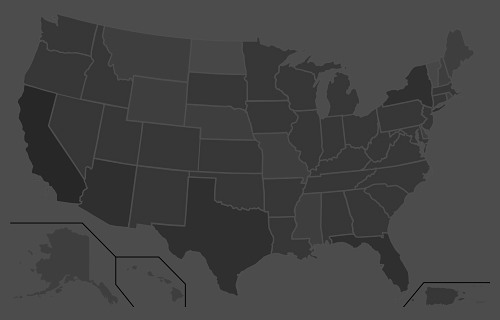“Our added winter moisture and active calling period led to a very long nesting and hatching season, starting in late April and extending into early summer, with chicks hatching as late as early July,” O’Dell said. “From a population standpoint, we are out of a deficit for the first time since 2001-2002. Quail are starting to pop up in places they haven’t been seen in a while.
“If you’ve never had the chance to experience what Arizona quail hunting built its name on, then this would be the year to get out and enjoy it.”
Meanwhile, hunters should note that the season for Mearns’ quail doesn’t begin until Dec. 4. It’s summer rainfall that plays a key role in nesting success and population numbers of this species. After a spotty and relatively weak monsoon across southern Arizona, these birds are likely to be abundant only in pockets that received sufficient precipitation this summer.
A valid Arizona hunting or combination hunt and fish license is required for all hunters 10 and older. Those hunters under 10 must either have a valid hunting or combination hunt and fish license, or be accompanied by an adult who possesses a valid hunting or combination hunt and fish license. Licenses can be purchased online or at license dealers statewide. A youth combination hunt and fish license (ages 10 to 17) is $5.
The general bag limit is 15 quail per day in the aggregate, of which no more than eight may be Mearns’ quail (when the Mearns’ season opens Dec. 4). The general possession limit is 45 quail in the aggregate after opening day, of which no more than 15 Gambel’s, scaled or California quail in the aggregate may be taken in any one day. After the opening of the Mearns’ season, the 45-quail possession limit may include 24 Mearns’ quail, of which no more than eight may be taken in any one day.
More quail-hunting information can be found on the department’s website at https://www.azgfd.com/Hunting/. Another resource for both new and experienced hunters alike is “An Introduction to Hunting Arizona’s Small Game.” Written by Randall D. Babb, the 196-page, full-color book covers where and how to hunt small game birds (like quail), squirrels, rabbits, ducks and geese. It also includes how to prepare and cook your harvest, with illustrations and recipes. The book can be ordered for $16.95 at www.azgfd.gov/publications.
Finally, hunters should check out O’Dell’s techniques for field-dressing quail at https://www.youtube.com/watch?v=3gRwZAcWzzk.
####
Publishers Notes: OUT OF STATE HUNTERS, FISHERMEN & OUTDOOR ENTHUSIASTS; Due to the Covid 19 pandemic, there could be limitations for OUT of STATE hunters, fishermen and other outdoor enthusiasts to include a 14-day quarantine requirement or negative COVID-19 testing alternative. Please check with the State's Department of Natural Resources BEFORE you travel or apply for the 2020 Fall Hunts.
Disclaimer: The views expressed on this site are that of the authors and not necessarily that of TBC Press
Western South Dakota has Significant Disease Outbreak in Deer
Submitted by: TBC Press
Posted on: 10/12/21
The Backcountry Press
The country's premier daily HUNTING, FISHING & OUTDOOR news in the USA and around the globe. Read whats happening in your neck of the woods & beyond.
© 2020 TBC Press - All Rights Reserved Website Design by:
News # 14564
The South Dakota Game, Fish and Parks (GFP) has removed additional unsold antlerless deer licenses from some hunting units in western South Dakota due to a fatal deer disease. GFP is also encouraging all West River deer hunters to inquire with local landowners and wildlife conservation officers on local conditions, to decide if they should return their current deer license because of these issues.
“Based on mortality we have previously documented and the continued reports from landowners, hunters and other individuals in the field regarding dead deer, we have determined we have a significant hemorrhagic disease outbreak in western South Dakota,” said wildlife division director, Tom Kirschenmann.
In response to this outbreak, GFP has removed an additional 379 unsold antlerless deer licenses in Harding, Meade, and Perkins counties. Just a week ago, GFP removed 559 antlerless deer licenses valid on private land only in Harding and Meade counties.
GFP is urging all deer hunters to reach out to local landowners to help decide if they should return their deer license for a refund, regardless where they would be hunting.
“GFP’s license return policy allows hunters to return their license for any reason, as long as they are postmarked prior to the start of the respective season, for a full refund and reinstatement of preference points,” Kirschenmann said. “Regardless where you plan to hunt in the state, please do your research and if you feel the area you plan to hunt has been impacted you are welcome to take advantage of this opportunity to return your license.”
Currently, hemorrhagic disease has been confirmed in 15 counties across the state. A complete map of impacted counties can be found online. GFP encourages hunters and landowners to continue to report dead deer to their local GFP conservation officer or GFP office.
Deer Hunters in Central South Dakota May Return Licenses Due to Disease Outbreak
Due to an outbreak of epizootic hemorrhagic disease (EHD) the South Dakota Game, Fish and Parks (GFP) is offering hunters in Aurora, Faulk, Hand, Hughes, Hyde, Jerauld, Potter and Sully counties the opportunity to voluntarily return their deer licenses.
License returns are being accepted for East River Deer tags only, from the above listed hunting units and do not apply to archery, apprentice, mentored, or muzzleloader licenses. If you hunt private land, it can be helpful to contact the landowner for more information on local conditions before making a decision about returning your tag.
About Hemorrhagic Disease
Hemorrhagic disease, caused by epizootic hemorrhagic disease (EHD) or blue tongue (BT) virus, is spread by a biting midge and causes extensive internal hemorrhaging in infected animals. Both EHD and BT viral caused mortalities have been detected this year in South Dakota, particularly in western South Dakota. Many deer exhibit no clinical signs and appear perfectly healthy, while others may have symptoms such as respiratory distress, fever, swelling of the tongue, or ultimately death.
For more information on hemorrhagic disease visit https://gfp.sd.gov/epizootic-hemorrhagic-disease/.
####












